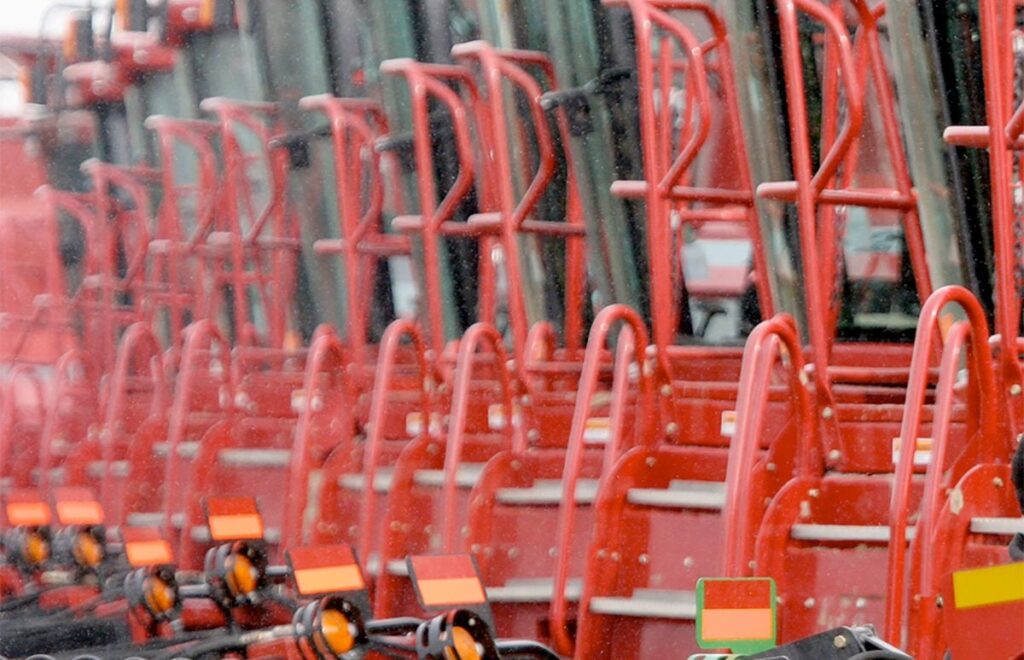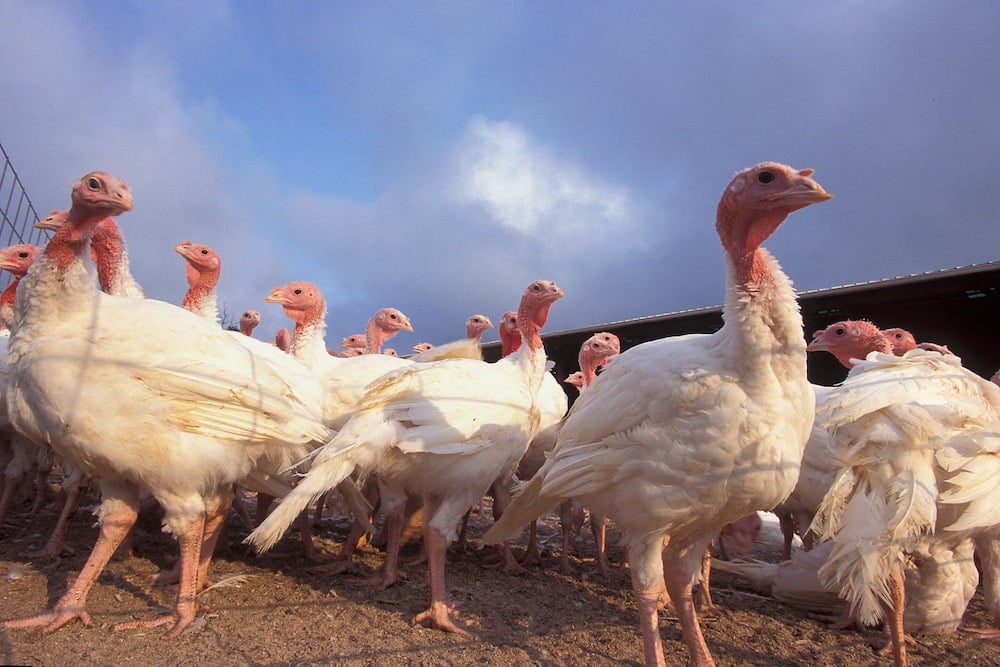Tariffs add to ‘perfect storm’ for ag equipment dealers

Glacier FarmMedia—The uncertainty surrounding the threat of substantial tariffs on key U.S. trading partners has North American businesses on edge. That is especially true for agricultural equipment manufacturers and the dealers that retail their products.
“It’s been a long time since tariffs made up a piece of the puzzle between the U.S. and Canada,” says Eric Wareham, senior vice-president for government affairs with the North American Equipment Dealers Association.
”We’re talking clear back to the early 1900s.”
NAEDA represents agricultural equipment dealers in Canada and the United States.
Read Also

US turkey producers should ramp up bird flu testing, USDA says
U.S. poultry producers should ramp up testing and monitoring of turkeys for bird flu before they are slaughtered to ensure the virus stays out of the food supply, the U.S. Department of Agriculture said on Friday.
The uncertainty surrounding the tariff threat has farm equipment dealers in both the U.S. and Canada feeling uneasy.
“It is worrisome for dealers across the board when we start talking about tariffs,” Wareham says.
“It’s kind of a wild west. No one really knows how it’s going to play out.”
The tariff would raise the cost of inputs for agricultural equipment manufacturers on both sides of the border. Canadian manufacturers source many components from the U.S., and vice versa.
“With everything we have, there are all kinds of components from all over the world compiled and assembled in different places,” says Wareham.
“You’re looking at a cost increase on the whole-goods side The price tag of farm equipment on the lot is going to go up.
“There are a ton of components for farm equipment that are manufactured in Canada, so obviously that’s going to have a big impact on the cost, with a 25 per cent tariff added onto every item that’s incorporated into machinery. The same can be said for Mexico.”
That prospect couldn’t come at a worse time for farm equipment dealers. Low farm commodity prices, higher interest rates and a growing inventory of unsold equipment have put significant pressure on dealers’ finances.
“We’re already in a downturn, and now we’re going to impose tariffs and inject that additional uncertainty into the market,” says Wareham.
“When you inject that uncertainty of what it’s going to look like down the road, that’s really what holds people back from making purchases.”
A blanket 25 per cent tariff, as threatened, would also put even more downward price pressure on farm commodities sold into the U.S., further reducing Canadian farmers’ buying power.
“Combine high inventory levels, uncertainty and a deep dive in farm net income and all those three combined do make a perfect storm,” he adds.
It’s uncharted territory, but a look back at the last Trump administration’s trade sanctions on China proved to be a financial disaster for the U.S. as well as having a significant impact on dealers’ profits.
“We didn’t have tariffs on Canada in the last Trump administration, but you can look at what happened in the U.S.,” Wareham says.
“At that time, in 2018, farm income was on the rise. We were coming out of the slump of ’15, ’16. Even still, it had a very negative effect on farmers because of the U.S. retaliatory tariffs. Then you were looking at direct government payments to make up for that. The U.S. paid out $25 billion over two years to compensate farmers for lost markets.”
Those payments, which accounted for roughly 40 per cent of farmers’ net income at the time, were slow in coming and were made directly to farmers, so they didn’t directly benefit equipment dealers who lost sales.
The COVID-19 pandemic hit before that problem had been fully resolved, which resulted in a cut in new equipment production and turned farmers’ attention to the used equipment market.
If tariffs are applied, something similar may happen again in both the U.S. and Canada. In the near term, farmers with cash will likely find the best opportunity for avoiding those potential price increases in the fairly large existing inventory of new and used machines to which dealers already have access.
“We have somewhat of a glut in inventory,” says Wareham.
“You’ll also have a lot more repairs, with people trying to get more useful life out of the equipment they have. That continues to be a struggle for dealers on the service side, having enough technicians. So it puts a strain on that.”
The result is many dealers are telling NAEDA they’re not considering any capital expenditures or possibly even not hiring new staff until things settle out.
“(Dealers) are just in this wait-and-see mode right now,” says Wareham.
“It’s a pause on consolidation or acquisitions, purchasing new facilities or possibly even hiring, with the exception of technicians. We’re always looking for those.
“But for any kind of expansion mindset, I think it’s a wait and see until some of this starts to sort itself out.
Source: Farmtario.com

